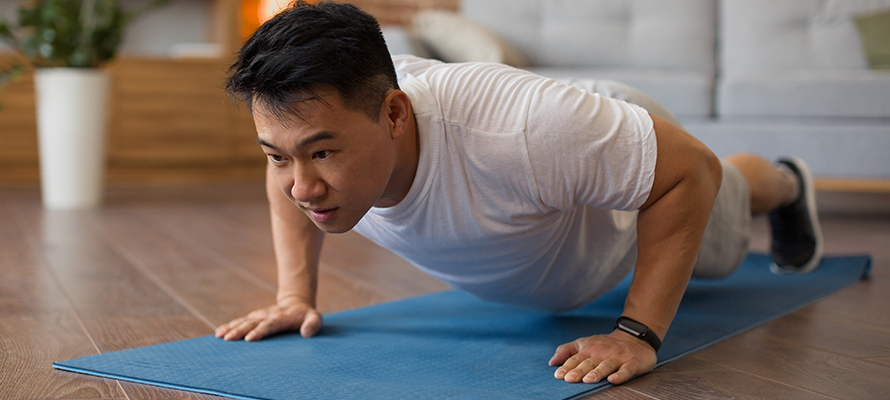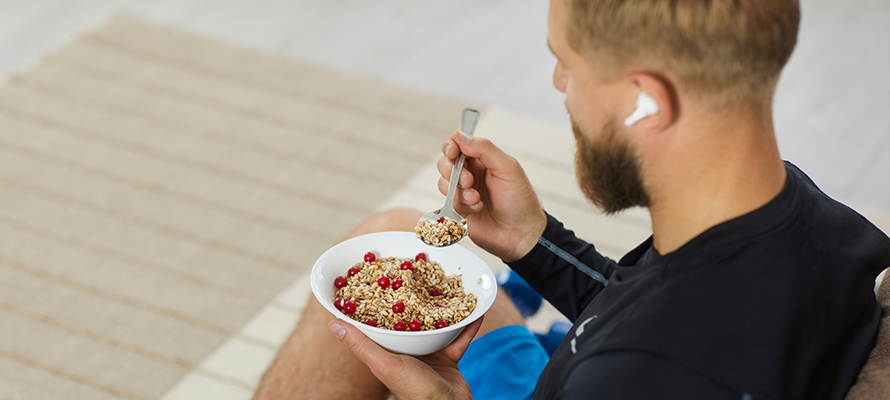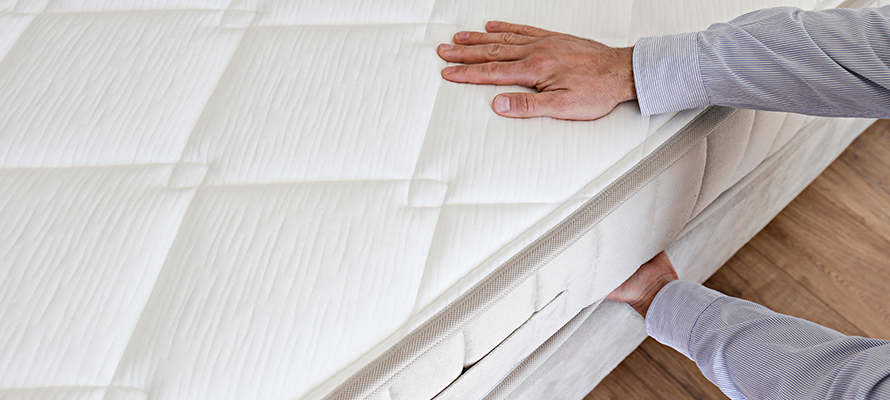About 28% of adults are estimated to experience lower back pain, but this number is even higher in the construction industry. Whether from heavy lifting, repetitive motions, or awkward positions, many
construction workers experience discomfort and low back pain that can interfere with their lives in and
out of work.
Using a supportive mattress, avoiding morning exercise, and adding insoles to boots are simple solutions
that can help alleviate back pain.
Quick Look
- Statistics suggest that more than 31% of construction workers report experiencing lower back pain
at some point in their careers. - Heavy lifting, repetitive motions, and awkward positions are major contributors to back pain and
other musculoskeletal conditions in construction workers. - Regular stretching, core exercises, eating anti-inflammatory foods, and adding insoles to boots can
alleviate back pain.
Low back pain—a common complaint in construction
According to recent statistics, nearly 31% of construction workers report experiencing lower back pain at some point in their careers. To anyone who’s worked in the field, this comes as no surprise—construction is tough and sometimes requires you to be in awkward positions for extended periods.
While they may seem harmless at first, these positions put construction workers at higher risk of injury. These positions often put unequal stress on the body, causing our muscles to compensate. With enough repetition, this unequal stress can quickly lead to a sudden injury, causing lower back pain.
Once the injury occurs, if left untreated, it can develop into a serious problem.
No matter the cause, low back pain can make it challenging to do your job or put you out of work altogether. Research finds that about 6 to 10% of workers stop working, switch careers, or change their jobs because of their lower back pain.
But here’s the thing: low back pain doesn’t have to happen—it’s preventable. Here’s how.
Rebalance your musculoskeletal system

The first step is to rebalance your muscles. Musculoskeletal injuries occur in labor jobs because of muscular imbalances developed through work. These imbalances put unequal pressure on the bones and joints and must be addressed to heal the pain.
However, these imbalances can occur in several parts of your body, making it difficult to treat them without the right approach.
Here are some tips to get started.
1. Increase your flexibility
Maintaining flexibility is crucial for preventing low back pain but can also help make your job easier. Incorporating daily stretches can help keep your muscles limber and reduce the risk of strains. While it can be tempting to stretch before you start your day, the best time to stretch is in the evening or after your shift.
2. Strengthen your core
A strong core is essential for supporting your spine. Planks, bridges, and back extensions are excellent exercises to build core strength and stability while helping reduce lower back pain by increasing support for your spine during heavy and repetitive lifts. Put simply, the stronger your core, the more your body can handle.
3. Increase your general strength
Working on a site requires the use of almost every body part, so it’s a no-brainer to strengthen the main muscles as well. Therefore, creating a strength-training program that targets every muscle group is crucial.
Exercises like a shoulder press, kettlebell squats, and seated rows are great exercises that offer benefits beyond just aesthetics and general strength. But be sure to always focus on proper form rather than maxing out your weight; otherwise, you’ll add it to the list of causes of lower back pain.
4. Release your fascial trigger points
Trigger points are one of the most ignored causes of lower back pain. Tightness in the body can affect muscle function and wreak havoc on your body. Luckily, techniques like foam rolling can help alleviate muscle tension and relieve lower back pain.
5. Lift properly
Proper lifting technique is another overlooked aspect but is highly applicable to construction workers. Taking the time to focus on, as the old saying goes, “lifting with the legs,” can significantly reduce repetitive strain on your spine and offer lower back pain relief.
How to lift properly: Bend at your knees and sit your hips back to squat into a safe position. From the ground, make sure to use your legs rather than your back to lift. Also, avoid twisting your back while lifting, as it puts your back at a greater risk of injury.
Reduce inflammation

While rebalancing your muscles is key in preventing lower back pain, reducing inflammation in the body is also important. There are many ways to achieve this, but here are the main ones you should focus on.
6. Eliminate inflammatory foods
Chronic inflammation is associated with a host of issues, but it’s also a contributing factor to
lower back pain. By eliminating inflammatory foods from your diet—refined sugar, industrial seed oils, processed and refined carbohydrates, hydrogenated oils—you can take steps to reduce unnecessary inflammation caused by diet and, therefore, begin to alleviate lower back pain.
But you can also double down on this strategy by replacing them with anti-inflammatory foods like berries, cold-water fatty fish, and leafy greens, all of which help fight free radicals and reduce inflammation.
7. Quit smoking
It’s estimated that roughly a third of construction workers use some form of tobacco products. Smoking not only harms your lungs but can also contribute to low back pain.
Nicotine restricts blood flow to the discs in your spine, which can lead to degeneration and pain. Therefore, quitting smoking can promote healthier spinal tissues, reducing the risk of low back pain. If you’re a smoker, seeking help to quit can make a drastic difference in your health and ability to work.
8. Reduce alcohol intake
Alcohol is another staple for construction workers, but if you’re experiencing chronic pain, it should be on your list of no-nos. Alcohol is dehydrating, and heavy drinking can reduce the amount of water in intervertebral discs that provide cushion to your spine. Excessive drinking can also lead to poor sleep quality, exacerbating any pain-related problems. By reducing your alcohol intake, you can improve hydration, enhance sleep quality, and reduce inflammation, all of which reduce your low back pain.
9. Reduce mental stress
Something most construction workers don’t talk about is mental stress—it’s one of the many causes of lower back pain with solid evidence behind it. Studies suggest that low job satisfaction, high job stress, unrealistic job goals, and a lack of control over the work environment lead to musculoskeletal disorders among construction workers. Finding ways to manage and reduce stress can help alleviate lower back pain and improve mental health and well-being. For example, talking to a therapist to help you navigate these problems can help you achieve better mental clarity. If that’s not your jam, spending time outdoors or on activities you love is a great way to reduce mental stress.
10. Improve your sleep
There is a bidirectional relationship between sleep and chronic pain—pain can disrupt sleep, and short-term sleep deprivation can reduce pain threshold and increase spontaneous pain. To ensure a good sleep, have a comfortable mattress that supports your spine correctly.
Also, try to maintain a consistent sleep schedule and bedtime routine to help you fall asleep more easily. Pillows that support your body, such as placing one under your knees, can also reduce strain on your lower back.
Tips for lower back pain you may not have heard about

If you’ve tried some of these tips and haven’t felt relief, don’t fret—there’s more. Here are some pain-relief tips you may not have heard about.
11. Buy a new mattress
If you wake up with lower back pain, your mattress might be to blame. An old or unsupportive mattress can cause spinal misalignment during sleep. Most people with lower back pain find that a firmer mattress provides better support and reduces pain. If you notice sagging in your mattress, it might be time to invest in a new one.
12. Avoid exercising and stretching first thing in the morning
While it might seem like a good idea to start your day with exercise or stretching, it can actually increase the risk of a lower back injury. After a night’s sleep, the discs in your spine have absorbed fluid and are more prone to injury. Waiting an hour or two after waking up allows the pressure in your discs to normalize, reducing the risk of herniation.
Instead of strenuous exercise first thing in the morning, consider gentle movements like walking or doing light household chores to ease into your day and avoid triggering your lower back pain.
13. Try insoles in your steel-toe boots
Standing and walking in steel-toe boots all day can take a toll on your lower back. Adding cushioned insoles to your boots can help reduce the impact on your spine, providing lower back support and pain relief for those who spend long hours on their feet. This simple adjustment can make a huge difference.
14. Use a back belt for support
Finally, using a back belt is an underrated way to provide extra support for your lower back. This is especially true when your job requires lifting heavy objects. A back belt helps maintain proper posture and reduces strain by stabilizing your spine. But wear it only during work; it’s a tool to aid your back, not a permanent solution.
Reducing the risk of lower back injuries
Lower back pain is a significant concern for construction workers, but it musn’t be a daily struggle. By understanding the causes of lower back pain and taking proactive steps to prevent it, you can keep your lower back healthy and pain-free.
There are many ways to alleviate and prevent low back pain, from rebalancing your physical body with flexibility, strength, and proper lifting techniques to reducing inflammation through diet and stress management.
Whatever you do, just don’t let it sit.
The longer you ignore your lower back pain, the more likely it will develop into a chronic issue and sideline you from being able to work. If you’re still unsure what to do, consider talking to your doctor or a physiotherapist specializing in lower back pain.



7 comments